How To Make Almond Milk
Oct 01, 2012, Updated Sep 28, 2017
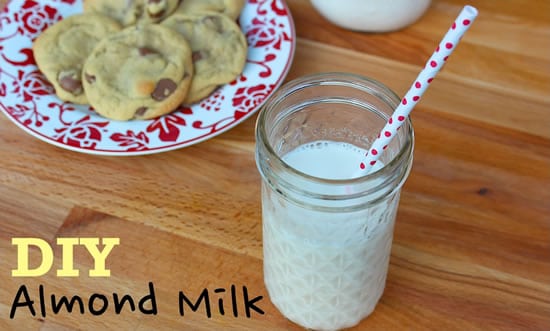
When I committed to October Unprocessed last year for the first time, I didn’t think it would be that big of a challenge considering how I eat already. I am a whole foods kind of girl. Already, when I go to my local co-op, I buy one-ingredient items or produce. I’ve already gotten into the habit of “processing” from scratch the foods I want to eat, such as condiments and bread.
But when the month began and I took a closer look at my daily food choices, I realized I had room to grow. I took on the challenge with gusto as an opportunity to learn how to make the processed foods I do indulge in. I came to realize that going unprocessed does not mean totally abandoning the foods I love or surviving a month of diet-like denial.
Often we buy processed foods out of convenience, thinking it would be too complicated, time-consuming or just plain impossible to make them from scratch. Well as it turns out, almond milk, a processed food I used to buy on a regular basis, is not. A product that used to come from the store in a tetra pak now sits in a mason jar in my fridge, with an ingredient list that consists solely of water and almonds.
A result of last year’s challenge has now become a seamless part of my weekly routine and a constant reminder of how easy and satisfying going unprocessed can be.
As far as the economic benefits are concerned, I was able to get about three cups of raw almonds out of a pound, which yields about three quarts of almond milk. Considering that I spent around $6 for the almonds and usually spend $2 – $2.50 on a container of almond milk, I pretty much broke even as far as cost was concerned.
However, the benefit that comes with making your own almond milk, besides the pride, is being able to make the quantity you want. Drinking a quart of almond milk can be a little bit of a challenge for one girl, but being able to make just a pint, which is not an option with commercially produced non-dairy milks, is priceless. Also, the almond paste bi-product I strain out makes a great, protein-tastic addition to a smoothie.
Let’s also consider packaging. Like I said, I was able to get three quarts of almond milk out of one package of Trader Joe’s raw almonds. So theoretically, I went from three rectangular containers to one plastic bag. Better yet, when I buy my almonds in bulk with my reusable produce sack, I’m down to no packaging at all! Score!
So, the verdict? Making your own almond milk is totally worth the effort and makes me happy every week! Check out this short video to see just how easy and fun it can be!
https://www.youtube.com/watch?v=-ANZ5XpuH5M
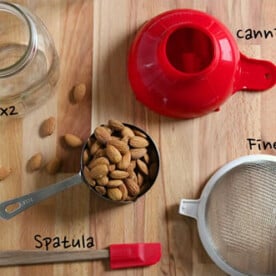
Almond Milk
Ingredients
- 1 cup raw almonds
- 4 cups water, plus more for soaking
Instructions
- Put the almonds in a mixing bowl and cover with water. Let sit for at least 6 hours.
- Strain the almonds and put in a blender with 4 cups of water. (It must be a blender, not a food processor – trust my previous experience on this one.) Blend for a full 2 minutes.
- Strain the blended mixture into a quart-size canning jar using a fine sieve. Press the solids through with a rubber spatula.
- Periodically, scrape the solids from the sieve (save them for smoothies) and rinse the sieve to enable more liquid to pass through.
- Strain the first liquid through the sieve again, this time without pushing the mixture through. What you end up with in that jar is your finished product – DIY Almond Milk!
- Enjoy within 5 days.
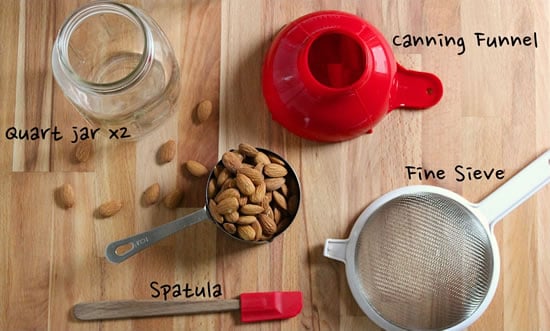


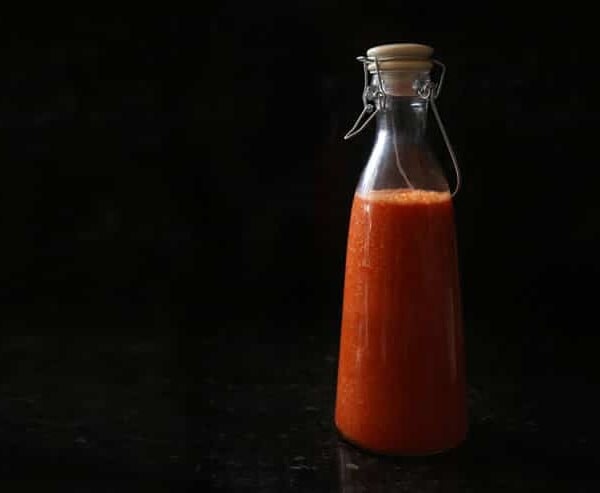

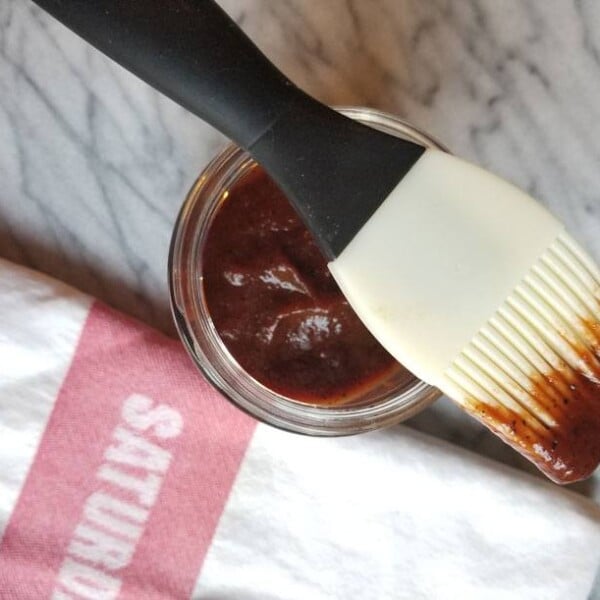
















What is the difference between a food processor and a blender?
Hi Maddy,
A food processor and blender are similar in that the both include a container with spinning blades at the center. However, a blender is usually used for liquids and softer foods, and a food processor tends to be used for more solid or firmer foods. (There’s definitely some overlap between them, though.) I just found this video that should help show the difference. 🙂
Great video. seems super simple. What is the shelf life? I am planning to make this for my 1-year-old who suffers from eczema.
Shelf life is 4 – 5 days since it’s preservative-free. 🙂
Do you know if this would freeze well? I dont see why not but any tips/experience with it?
Good question, Aubree! I always drink it before I have any left to freeze, but I imagine it would freeze beautifully. I imagine you’d just have to shake it up a bit before drinking in case the bits of solid and water separate after being frozen. If you try it, let me know how it goes!
Yes! Cashews make a nice creamy nutmilk! Soak 1 cup of cashews in a jar of water for 2 hours-overnight. Keep in fridge while soaking. Drain the water, then put them in a high power blender with 2-6 cups of purified water, depending on how rich you like your milk, and your budget (and 2-3 dates if you want your milk slightly sweet(don’t forget to take the pits out to save your blender blades)-or 2-3 Tblsp of honey or agave syrup) Blend and drink. There will be some graininess from the nuts unless you strain your milk through cheesecloth or preferably a nutmilk bag which is very quick as you can use your hands to squeeze the milk through the bag. I squeeze it into a large bowl so nothing gets lost from the bag and then pour that back into the blender for ease of pouring into bottles for… Read more »
Thanks Deborawh, much appreciated!
Can I do the same with cashews? I live in Indonesia and almonds are so expensive here.
Can someone also give me a recipe for rice milk? It might sound strange, living between rice paddies, but I can’t find any rice milk here, only a crazy expensive imported one.
sorry meant to say milk, not mil 🙂
Nothing wrong with not straining the almond bits out… It’s just a texture thing. 🙂
Is there anything wrong with keeping the crushed almonds in the mil instead of straining them? I usually throw out the soak water and then add a cup of water and put in blender and utilize the whole thing. brit
I use a cheese cloth instead of a sieve, makes for clearer milk. The mixture that’s left is great to put into smoothies or even vegan burgers. You can also ‘dry’ it in the oven and thus end up with a sort of almondflour. The water used to soak the almonds is greatly apprecitated by my plants who love the nutrients in it. I allso use 5-6 cups of water to 1 cup of almonds but that’s just personal taste.
Wonderful! 🙂
Just curious, do know approx. what the nutritional content would be of 1 cup of homemade almond milk?